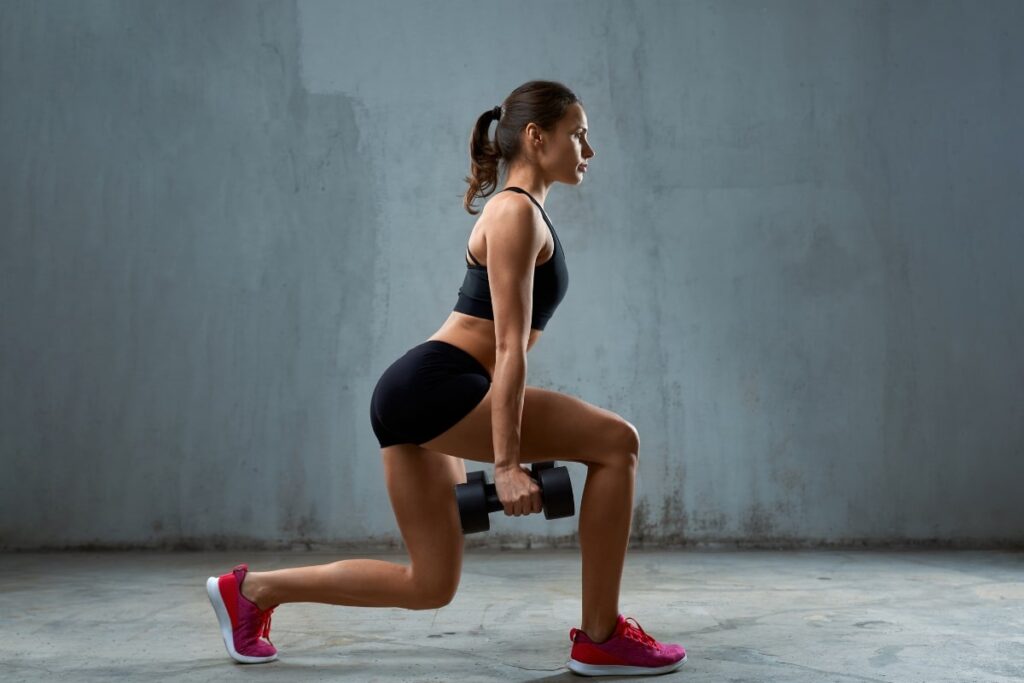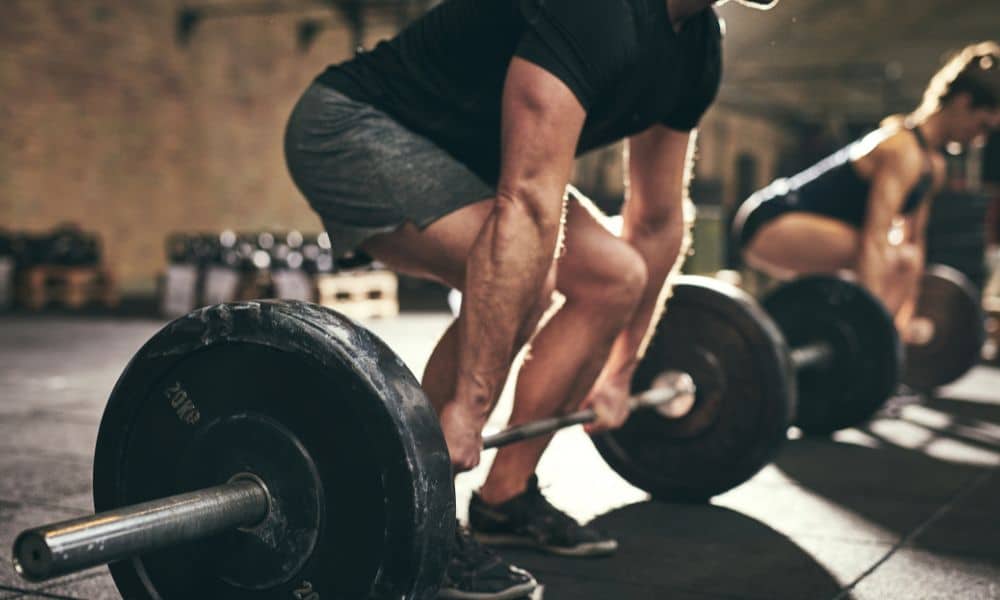Lunges are a phenomenal exercise that can help you target multiple areas of your body. Whether you want to improve overall muscle strength or tone up, they are a great way to start. In this article, we will discuss all the different types of lunges and how they can be used to achieve your fitness goals.
Muscles Worked by Lunges
Lunges primarily target the muscles in your lower body, such as your glutes, quads, hamstrings, and calves. However, this exercise also works the core muscles in your stomach and back. This makes them an excellent full-body exercise!
How to Perform Lunges
To perform this exercise correctly, begin standing with your feet shoulder-width apart. Next, step forward with one leg while firmly planting the other foot on the ground. Next, keep your torso upright and bend both knees until they form 90-degree angles. Finally, push off the front foot and return to the starting position before repeating on the opposite side. It is vital to keep proper form throughout this movement for maximum effectiveness.
Variations of Lunges
There are many variations of this exercise to try. The variation you select will depend on your preferences, workout, and goals. Here are the most common variations of the movement:
Barbell –
Barbell lunges require holding a barbell across your shoulders (or chest) while performing lunges as described above. This adds an extra difficulty level and increases engagement in other major muscle groups like those in your upper body and core!
Front Rack Barbell –
Front rack lunges require holding a barbell across your chest while performing regular squats with added weight resistance for an extra challenge!
Goblet –
With goblet lunges, you hold either a dumbbell or kettlebell at chest level while performing regular squats with added weight resistance for an extra challenge!
Dumbbell –
As with all variations of this exercise, start dumbbell lunges by standing with feet shoulder-width apart and take a large step forward with one leg while keeping the other foot planted firmly on the ground. Next, hold two dumbbells at the sides before bending both knees until they form 90-degree angles, then push off from the front foot and return to starting position before repeating on the opposite side!
Bodyweight –
With bodyweight lunges, focusing on proper form without weight is vital for this exercise variation. Start by standing with feet shoulder-width apart; take a large step forward with one leg while keeping the other foot planted firmly on the ground, then bend both knees until forming 90-degree angles before pushing off from the front foot and returning to starting position before repeating on the opposite side!
Walking –
Walking lunges are similar to regular bodyweight lunges except that instead of jumping between legs when returning to starting position each time, walk forward between legs for added intensity levels!
Volume Needed for Lunges
How many reps, sets, rest time, and weight should be used when performing lunge exercises depends mainly upon individual fitness goals (i.e., building muscle mass vs. toning up)—generally speaking. However, 3 – 5 sets of 8-12 reps should be performed per leg along with 1 minute rest time between each set using light weights if desired (start light, then increase as needed).
Final Thoughts on Lunges
Lunges are an incredibly effective exercise that can help target multiple areas of your body simultaneously—from your lower body up through core muscles in the stomach and back—making them perfect for anyone looking to improve overall muscle strength or tone up their physique!
Plus, there are numerous variations, so you’ll never get bored doing them again & again! With the correct form and volume needed for reps, sets, rest time, and weight recommendations discussed above—you’ll soon be unlocking the power behind these excellent exercises today and reaping benefits tomorrow!
If you love bodybuilding, share this article on Facebook or Twitter so that others can learn more about building muscle.




